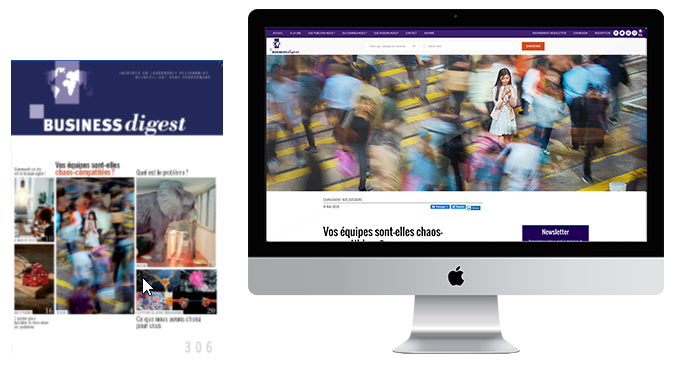What can you expect from IA in the coming years?
The Big Four (Google, Apple, Facebook, Amazon) and innovative US start-ups may have dominated the AI revolution thus far. But the recipe for success that worked so well for Silicon Valley is now outdated. The Chinese model, which unites a highly competitive entrepreneurial ecosystem, an abundance of data, a legion of technicians, and a huge public-sector investment, is poised to take the lead.
AI has long left experimental laboratories behind: we are now entering an era of mass implemen- tation. Though AI is already being deployed in many fields, the true tidal wave, the one that will transform daily life through smart objects and autonomous machines, is only beginning. According to Kai-Fu Lee, a venture capital expert and investor, China is well placed to benefit from this phase of AI growth. Here’s how you can draw inspiration from the Chinese model in order to ride the wave of emerging opportunities.
Anticipating the next waves
Kai-Fu Lee compares AI to a tsunami that ar- rives in four waves. Each, in turn, affects all sectors, occupations, and organizations, with an increasing influence on daily life. The first two waves (see box) have already come ashore. It is the following two waves, now in their initial and acceleration phases, that offer the opportunities of the future:
• The AI of smart objects, with sensory probes that act as eyes and ears, will optimize every aspect of daily life: home, shopping, education, etc. Voice and facial recognition tools will erase the frontiers between the physical and virtual worlds as they create an integrated, friction- less environment. For example, the chain restaurant KFC’s locations in China have partnered with the online payment platform Alipay (of the Alibaba group) to provide the option of payment through facial recognition. In the future, supermarkets’ “smart” shopping carts will be able to recognize and guide customers through their aisles, while providing product recommendations based on customer needs and preferences. Related technology will revolutionize the teaching sector by personalizing students’ education with the help of data collected in real time on students’ learning process, frequently made mistakes, and so on.
Excerpt from Business Digest N°292, December 2018
© Copyright Business Digest - All rights reserved

